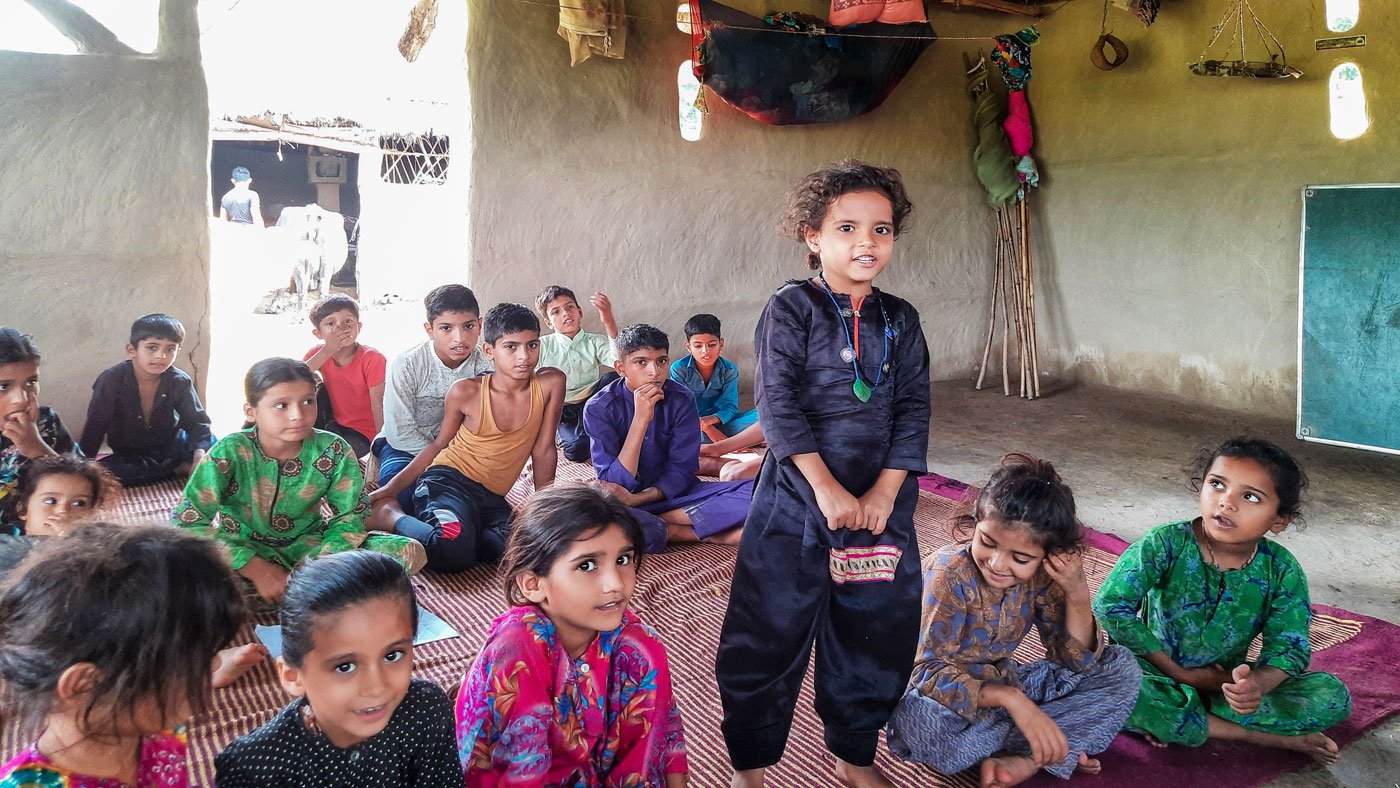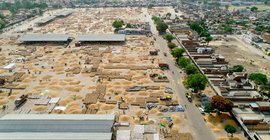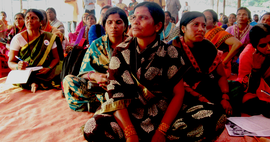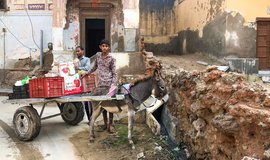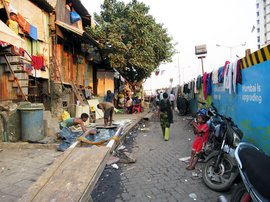Fatima Bano was reciting a poem: “The fan rotates above, the baby sleeps below,” she said in Hindi. “Sleep baby sleep, sleep on the big red cot... ” With all eyes on her, the nine-year-old was still trying to somehow not be noticed among the group of kids attending a class one afternoon in a Van Gujjar basti inside the Rajaji Tiger Reserve.
Their ‘school’ was being held that day in the front yard of Tabassum Biwi's house. A bunch of students, ages ranging from 5 to 13, were sitting on a large durrie, a few clutching notebooks. Tabassum Biwi’s two kids, a boy and a girl, were among them; her family, like almost everyone in this
basti
, rears buffaloes and sells milk for a living.
The school has been assembling intermittently in the Kunau Chaud settlement since 2015 – either in the yard or in a large room in the house. Classes are held on and off from Monday to Friday between 9:30 a.m. and 12:30 p.m. During one of my visits here in December 2020, when Fatima Bano was reciting the poem, 11 girls and 16 boys were present.
A band of Van Gujjar youth are their teachers. They try to fill in a persistent education gap in Kunau Chaud – a basti of around 200 families in Yamkeshwar block of Uttarakhand's Pauri Garhwal district. (Between 70,000 and 100,000 Van Gujjars live in the Kumaon and Garhwal regions of the state, estimate community activists; they are listed as an OBC in Uttarakhand and have been demanding Scheduled Tribe status.) The settlements that are in the tiger reserve usually consist of mud and thatch huts. Permanent construction is prohibited by the forest department, there are no toilet facilities, and water is used from forest streams.
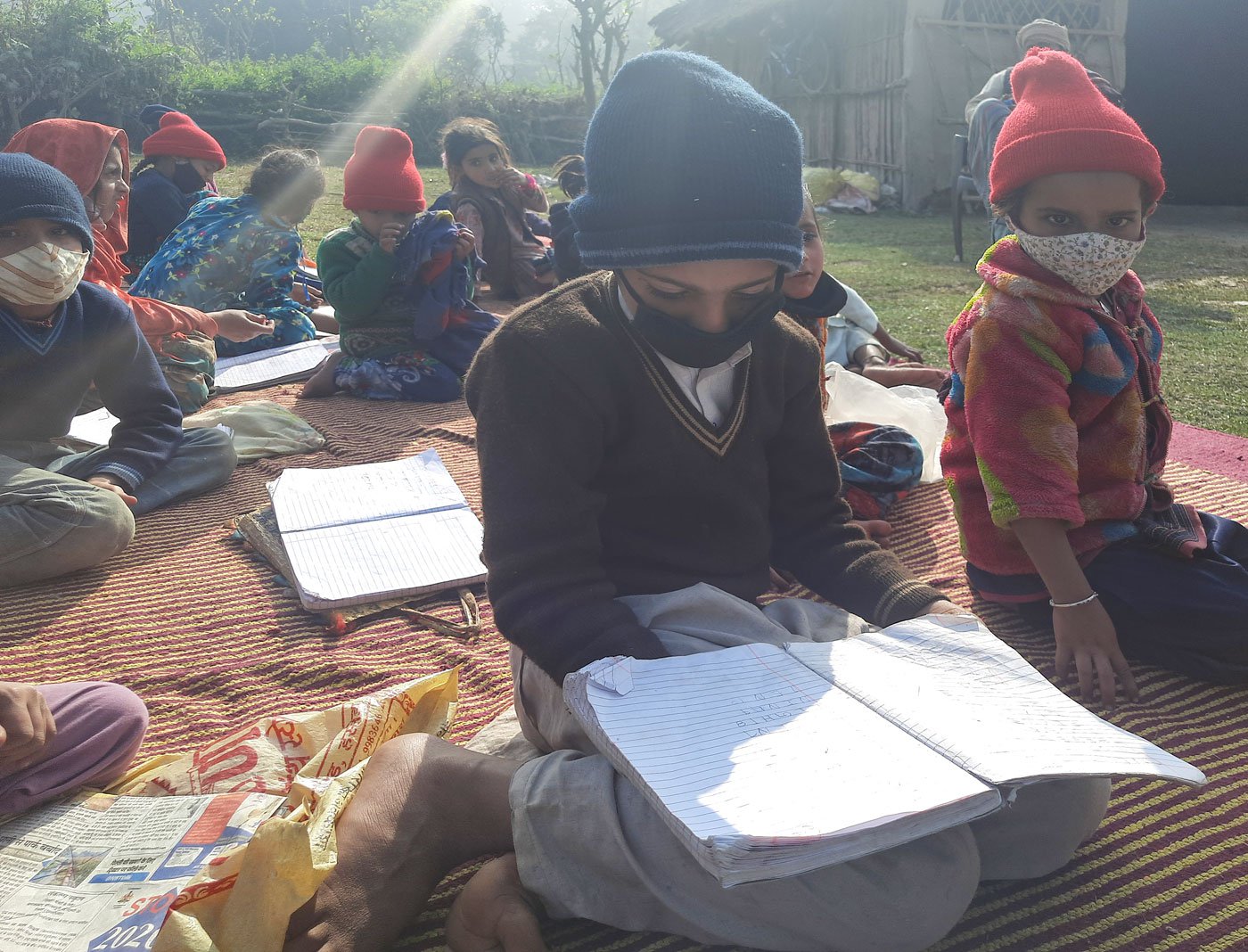
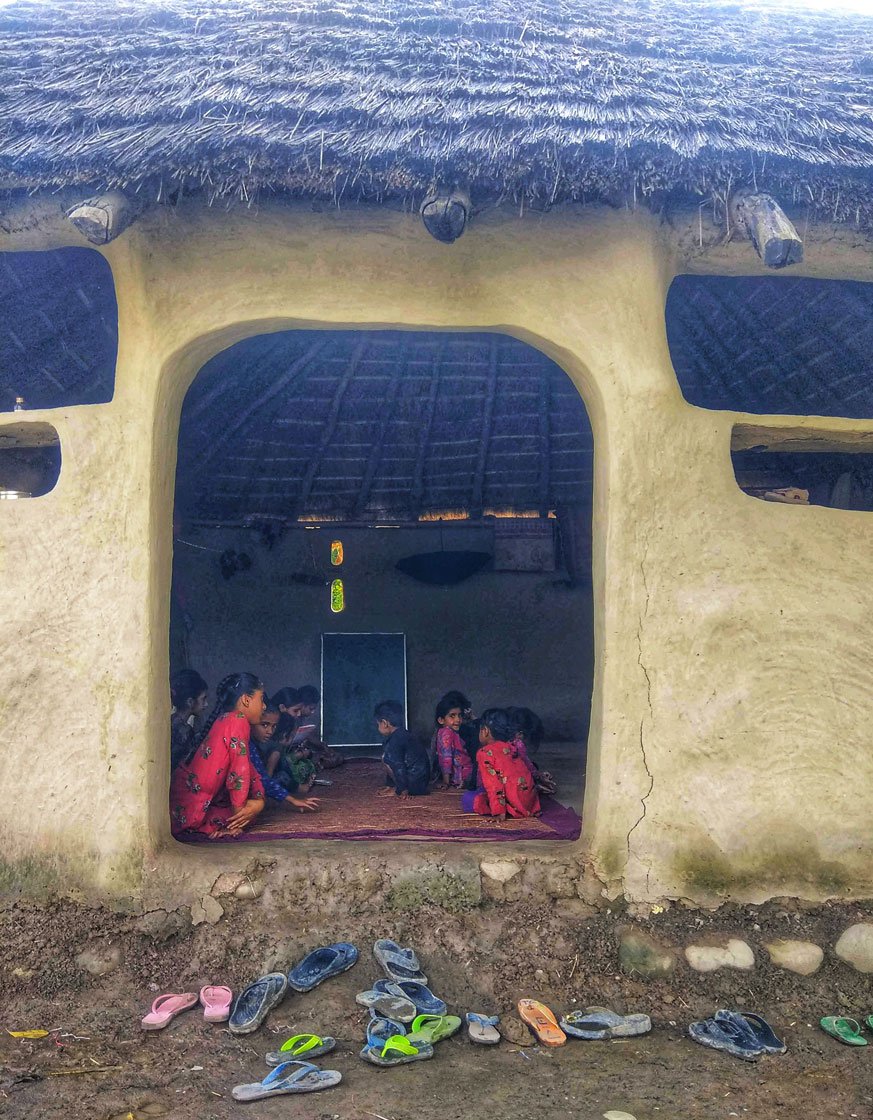
The ‘school’ has been assembling intermittently in the Kunau Chaud settlement since 2015 – either in the yard or in a large room in a house
Kunau Chaud is located inside the reserve, far from the pucca road – and schooling here remains erratic and uncommon due to several hurdles. The Government Model Primary School (till Class 5), and the Government Inter-College (till Class 12) are around three kilometres away. Wild animals like leopards, elephants and deer move about here. Reaching the schools requires wading through the shallow waters of the Bean river (a tributary of the Ganga). During the monsoon months of July and August, when the water rises, the kids either stop going to school or their parents shepherd them across this route.
Many are not even enrolled in school – a lack of documents restricts these attempts. Applying for and procuring official papers is a long and hard task for the Gujjar families living in remote forest bastis . Parents in Kunau Chaud say that most of their kids don’t possess birth certificates (and are born in the settlement itself) or Aadhaar cards. (In May 2021, the Uttarakhand High Court ordered the formation of a committee to address various persistent issues faced by Van Gujjars)
In many families, the older children spend a large portion of their days watching over cattle. Among them is Zaitoon Bibi’s 10-year-old son Imran Ali, who takes care of the family’s six buffaloes. Though he was enrolled in the government primary school and then admitted to Class 6 in August 2021, his education remains a challenge. “I wake up at 6 in the morning to feed the animals and then I milk them. After that I take them to drink water and then give them hay,” he says. Imran’s father sells milk and his mother looks after household activities, which include taking care of their cattle.
Like Imran, many children here are engaged in tasks at home for large parts of the day and this impacts their schooling. “Our kids help us in taking care of our buffaloes,” Bano Bibi says. “They take them for drinking water and for grazing. They also help with fetching wood from the forest for cooking on the chulha ." Her eldest son, 10-year-old Yakub, studies in Class 7 in the Inter-College, but two daughters and a son, ages ranging from 5 to 9, study in the basti ’s ‘informal’ school. "If our children are able to study, it will be good," she adds. "But after all we have to live in this forest [and these tasks too have to be done].”
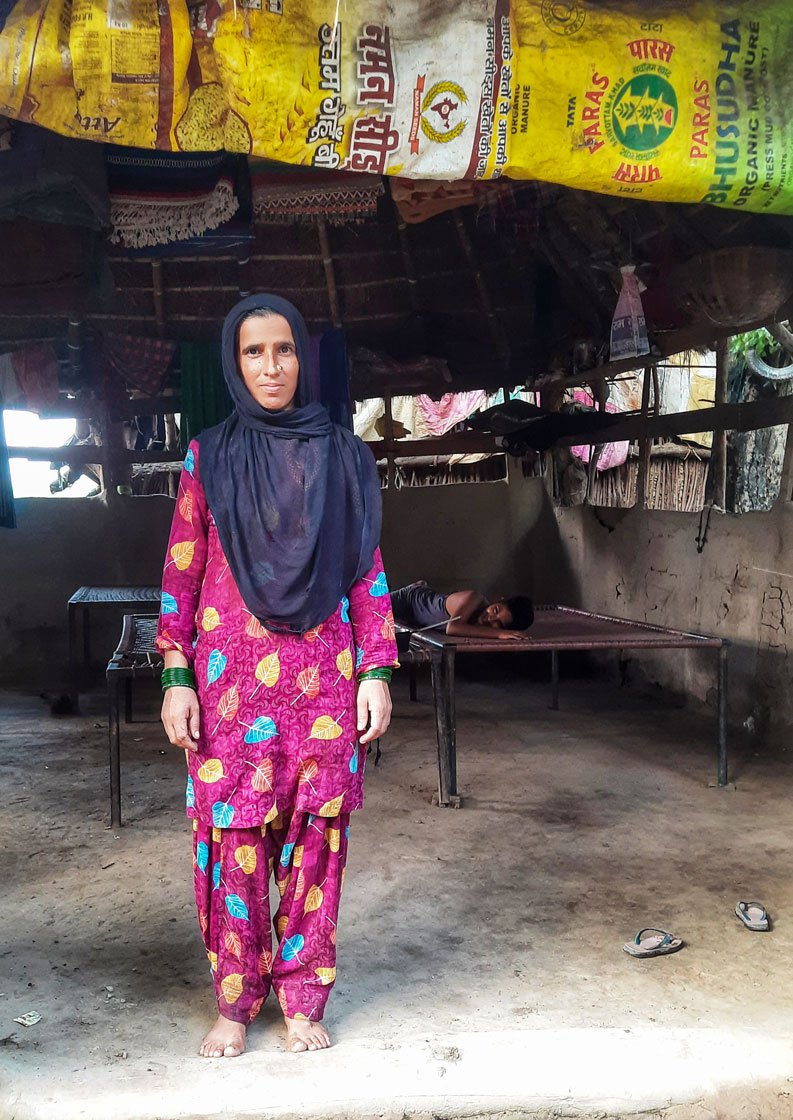
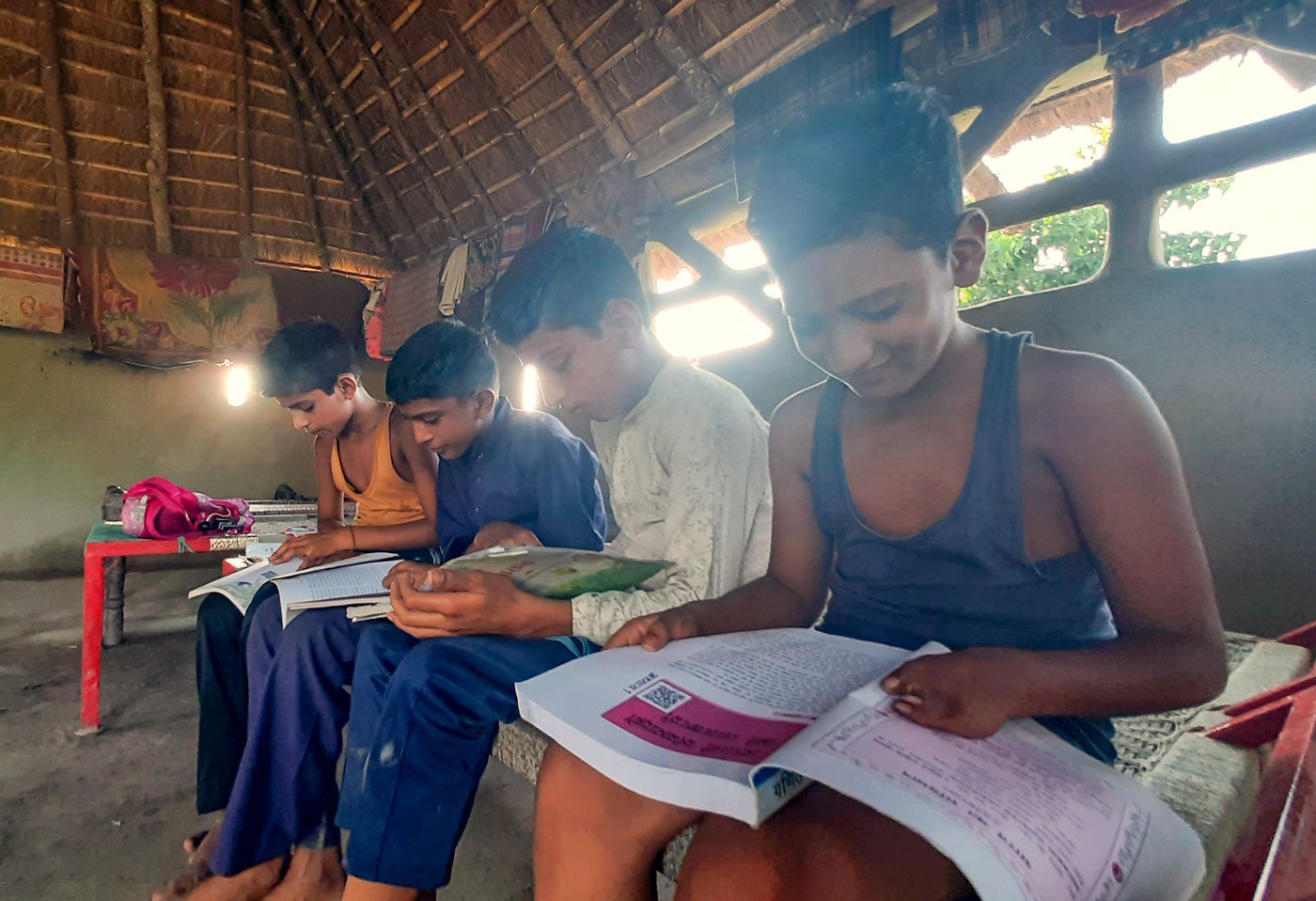
In many families, older children spend their days watching over cattle. Among them is Zaitoon Bibi’s (left) 10-year-old son Imran Ali (extreme right)
For long, the community’s nomadic migrations were also an impediment to education. But now, says Sharafat Ali, a member of the local Forest Rights Committee, most Van Gujjars no longer go to the highlands in the summer, and live in the same bastis throughout the year. Of the roughly 200 families in Kunau Chaud, only 4-5 still go to the mountains (in Uttarkashi or Rudraprayag districts), he estimates.
The pandemic, the prolonged lockdown in 2020 and then again in 2021, further impacted attempts at holding on to an education. “Our school [the government primary school] is closed due the lockdown. Now we study on our own [and in the
basti
’s ‘school’],” Imran had told me in 2020.
When the lockdown began in March 2020, some at-home lessons had continued. “We would give the children work in their notebooks and check these after 3-4 days, and teach them a new topic [by gathering 3-4 kids in one home],” says their teacher, 33-year-old Mohamad Shamshad. He, along with Mohamad Mir Hamza, 26, and Aftab Ali, 20, are this school’s local posse of teachers.
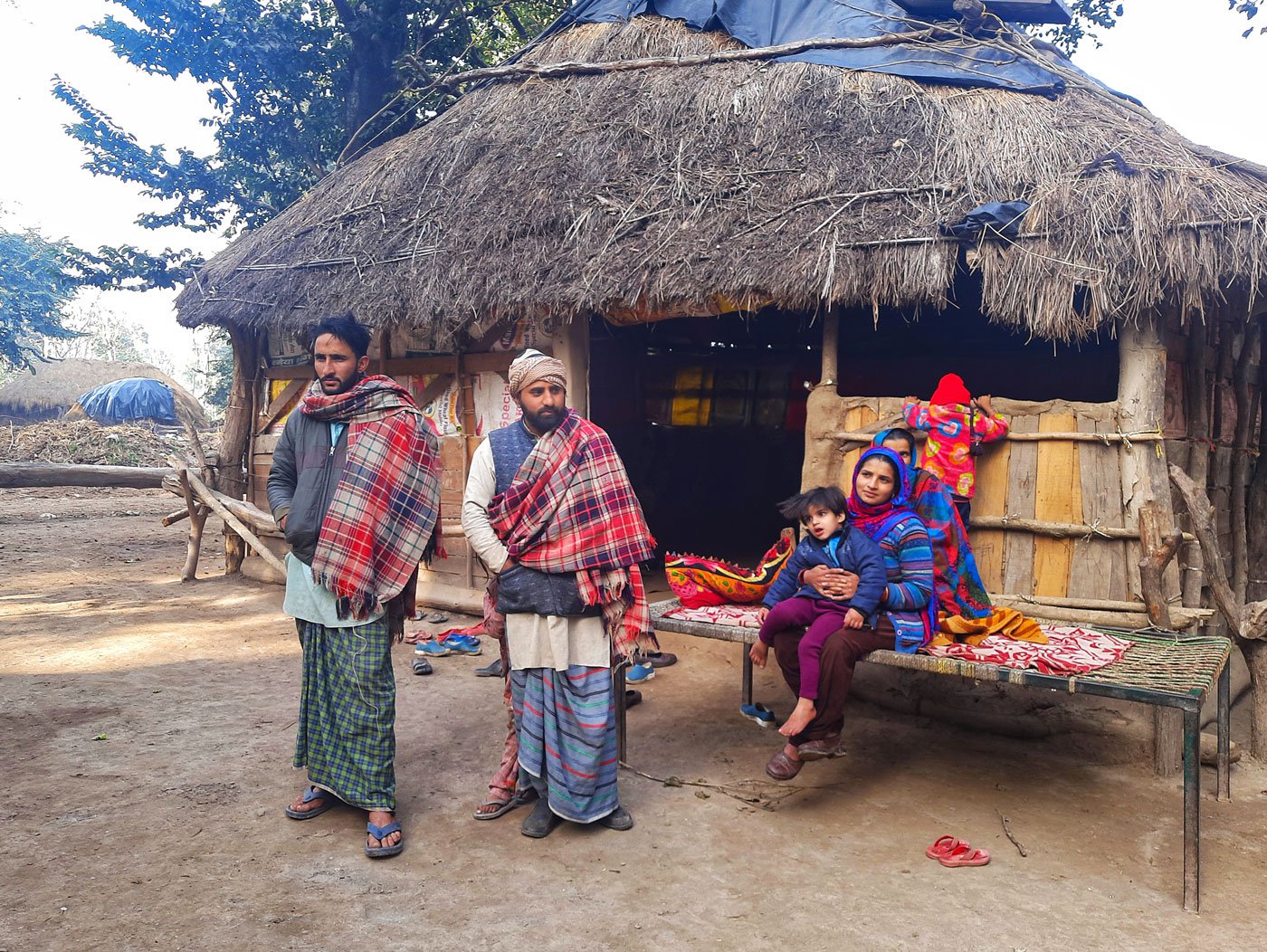
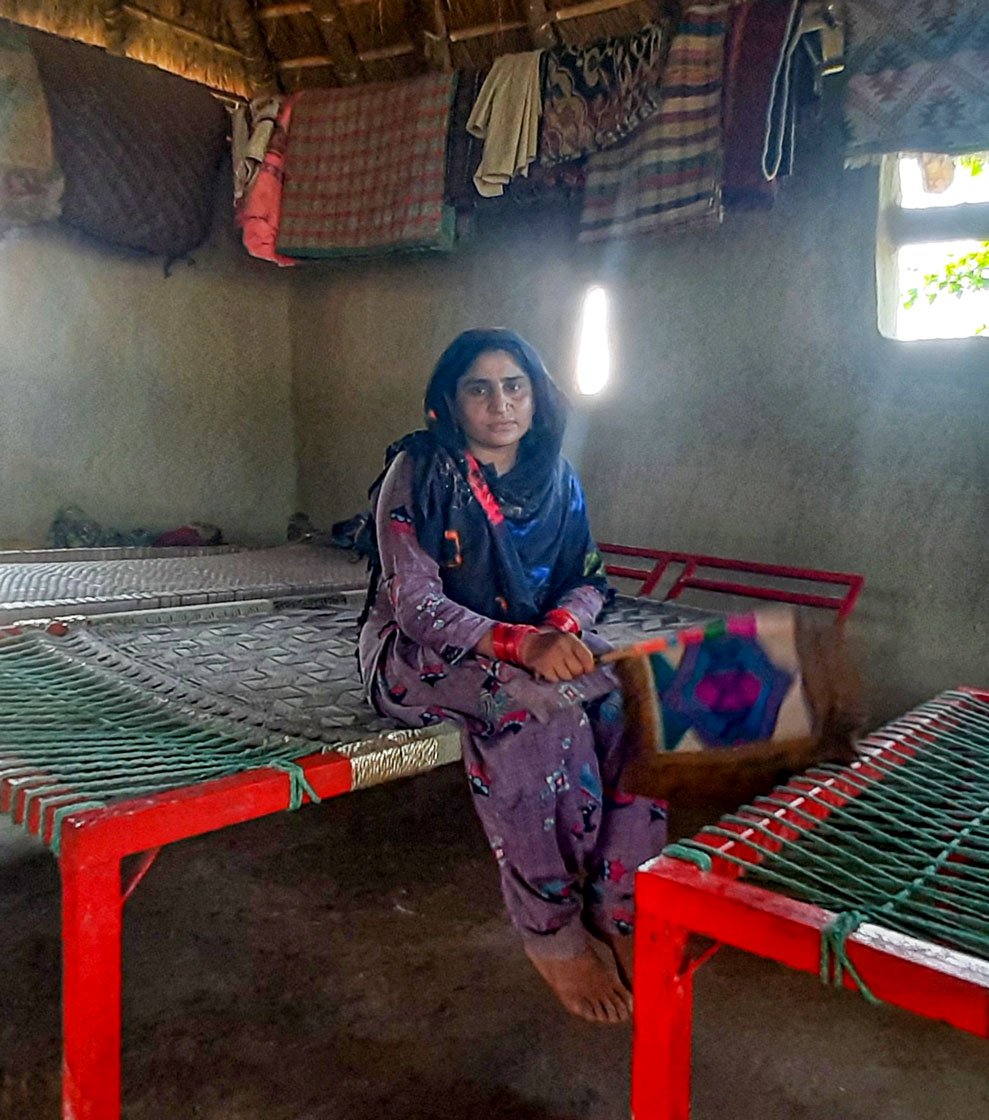
Left: For long, the Van Gujjar community’s nomadic migrations were also an impediment to education. But now, says Sharafat Ali (centre), a member of the local Forest Rights Committee, most Van Gujjars no longer go to the highlands in the summer. Right: ‘If our children are able to study, it will be good', Bano Bibi says
The road to schooling has been rocky here also because, for long, say the teachers, many parents – who themselves never went to school – were not convinced about the benefits of an education, and that too one acquired after numerous hurdles.
While jobs for those who are educated are rare, other livelihood options are limited too. Van Gujjars are restricted by the forest department from cultivating on forest land. Most of the families own buffaloes and a few cows – anything from 5 to 25 heads of cattle – and are involved in the milk business. Traders living in Rishikesh (the town is around 10 kilometres from the settlement) buy milk from Gujjar families. Depending on the number of animals they rear, a family can earn up to Rs. 20,000-25,000 a month by selling milk. But a major chunk of this income is spent on procuring fodder from the same traders, and in repaying recurring and old debts (on loans that would escalate especially during the earlier migration months from April to September).
So far, estimates, Mir Hamza, who is the director of the Yuva Sangathan, not even 10 per cent of the children in Kunau Chaud have been able to get a consistent formal education. “Despite laws on the right to education,” he says, “various schemes of the government related to education fail to reach this community since our
basti
is not attached to a
gram panchayat
[which would make it eligible to receive scheme-related benefits].” The residents here have been demanding that Kunau Chaud be given the status of a revenue village.
In 2015-16, under provisions of the Right of Children to Free and Compulsory Education Act (2009), Non-Residential Special Training Centres (NRSTCs) were started in some of the bastis , including in Kunau Chaud, to connect Van Gujjar children living in remote areas to formal education.
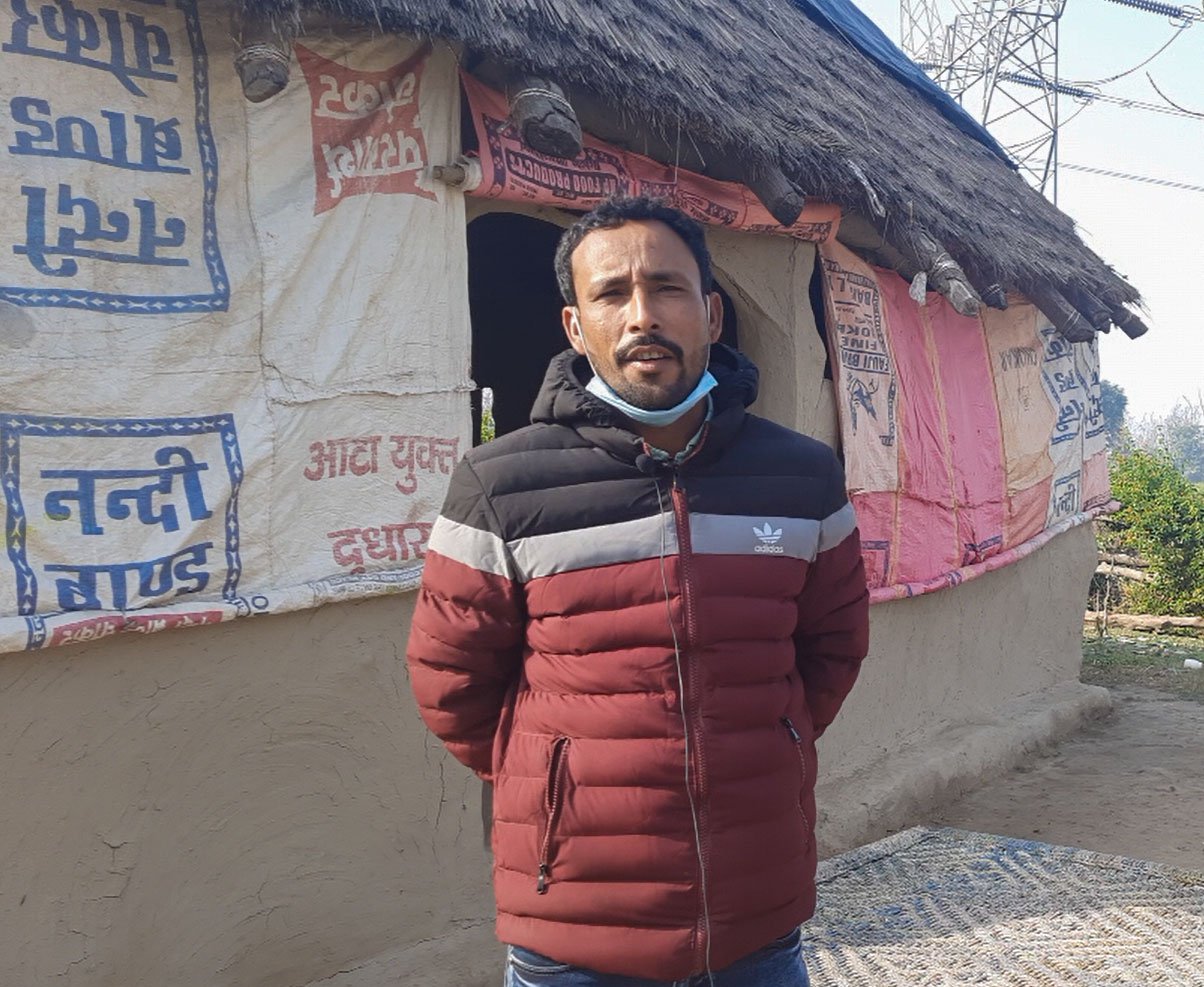
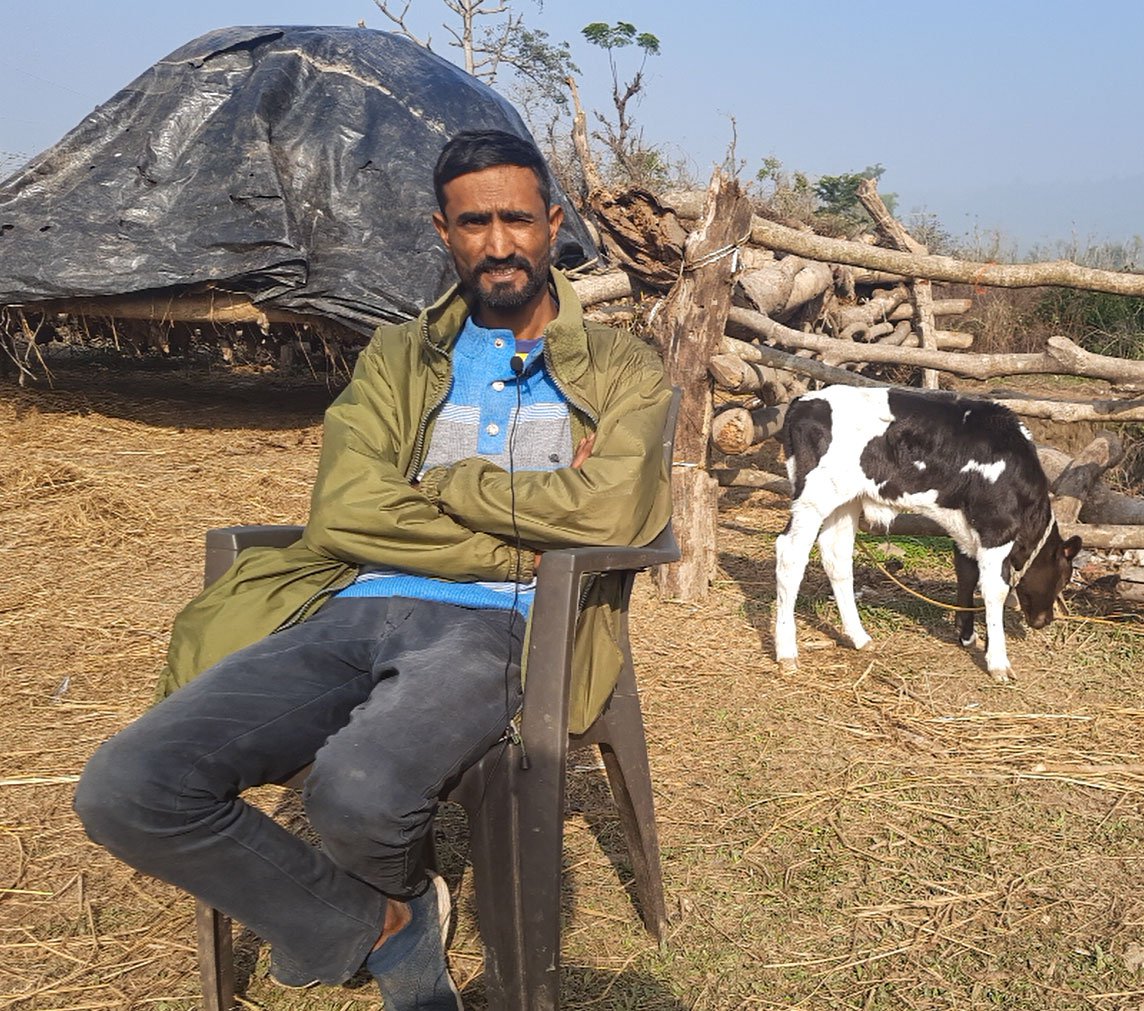
Mohamad Shamshad (left), along with Mohamad Mir Hamza, are the mainstays of the basti school’s local posse of teachers.
That academic year, 38 kids in Kunau Chaud attended these local classes, says Shailendra Amoli, block education officer, Yamkeshwar. After another approval in 2019, from June that year classes were again conducted with 92 kids on the rolls, until the March 2020 lockdown. For the 2021-22 academic year too NRSTC classes have been approved for Kunau Chaud, for 63 students in the 6 to 12 age group, says Shailendra.
He however adds that Van Gujjars still don’t have much faith in a formal education. Many of the children registered under NRSTC in 2015-16 have been re-registered in 2021-22, though these classes, he points out, are meant to be stop-gap arrangements.
However, Hamza and other local teachers say that the NRSTC classes (in 2015-16 and 2019) were irregular and there was no monitoring. The teachers were often absent, they came in from other villages and communities and were unfamiliar with local nuances.
According to NRSTC guidelines, Amoli says, in the settlements or villages where the scheme has been approved, local educated youth are to be given the task of teaching, and paid Rs. 7,000 per month. But when classes began in Kunau Chaud in 2015-16, there was no graduate in the basti and a person from another village was appointed as teacher. Mir Hamza, now studying for a Master’s degree, and Shamshad, now with a BCom degree, however complain that they have still not been given the job.
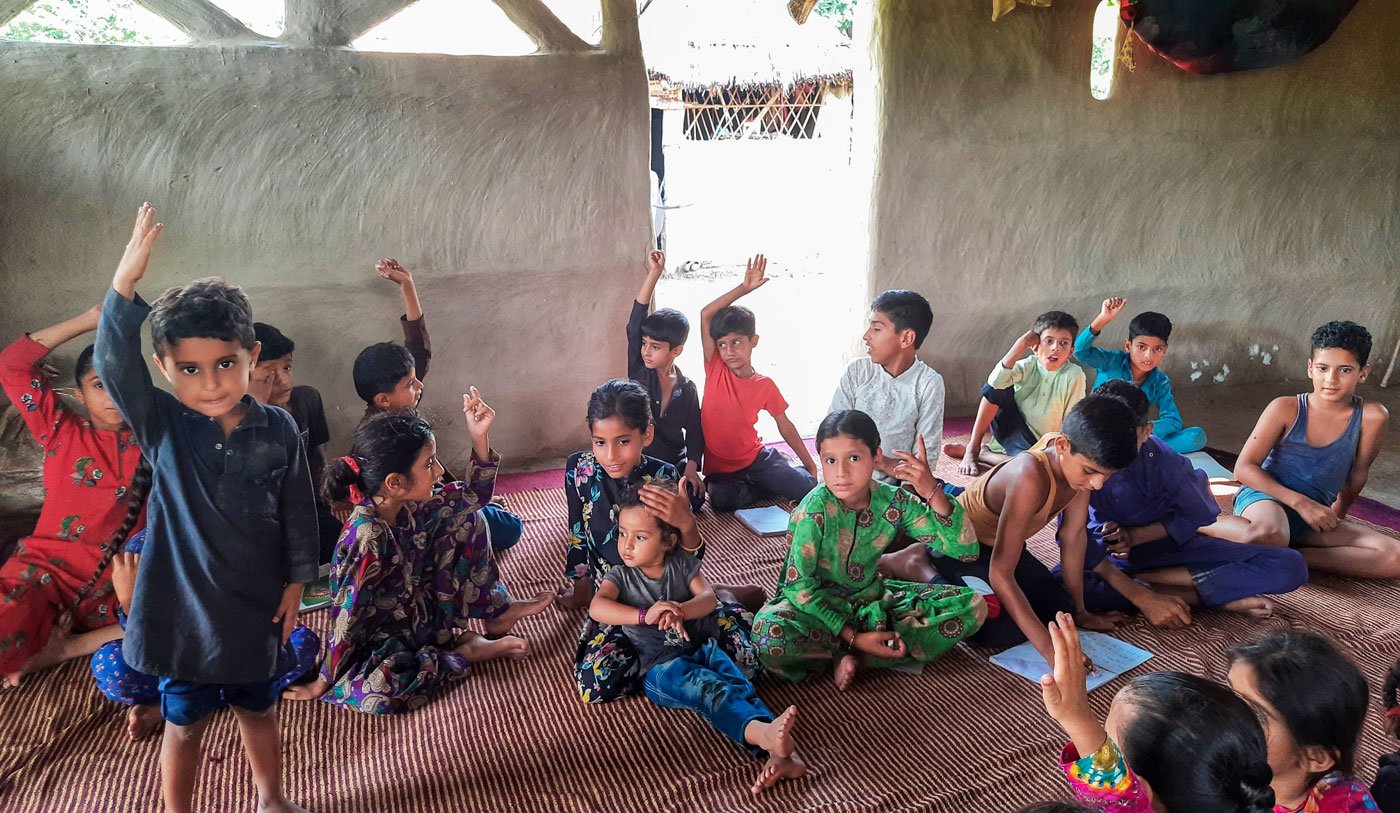
The ‘informal’ classes serve as add-on tuitions for older enrolled students and as preparation time for younger kids still to reach school
Meanwhile, the ‘informal’ classes they conduct, to fill gaps left by intermittent NRSTC sessions, continue to serve as add-on tuitions for older students who attend the Government Inter-College, and prepare younger kids (those attending the primary school as well as those never enrolled) to be able to give their Class 5 exams so that they can be enrolled in Class 6. The local teachers solicit Rs. 30-35 per child in a month to cover their costs, though this amount can vary and is not mandatory.
After working for long with their community members, trying to convince them of the benefits of an education, over time, the teachers say, a change is emerging.
“We want our children to be able to read and write. Jungle life is very difficult,” says Zaitoon Bibi. “They will not be able to work as hard as we do. None of us are literate. We don't want our kids to be like us."
Mohammad Rafi too wants his three children, ages ranging from 5 to 11, to study. His son Yakub, 11 years old, is enrolled in Class 7 in the government school, while his two younger kids attend the
basti
classes. “Seeing the world outside we feel that our children should be educated,” Rafi says.
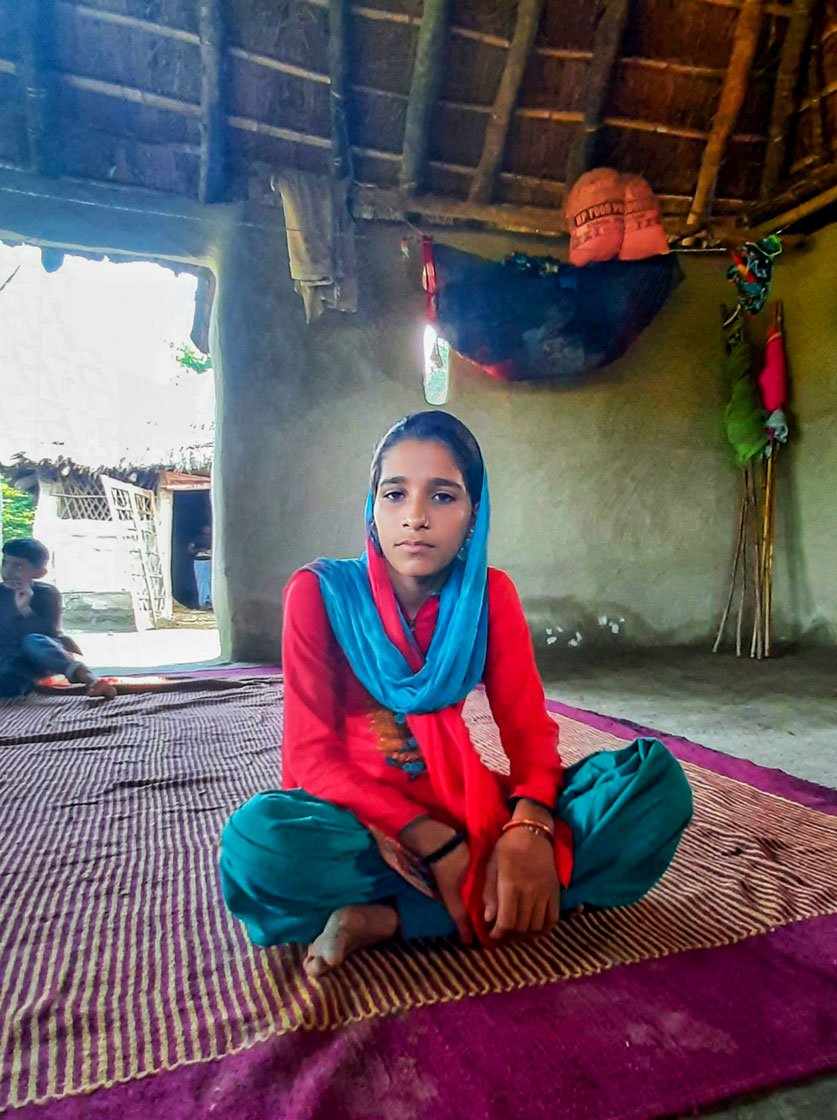
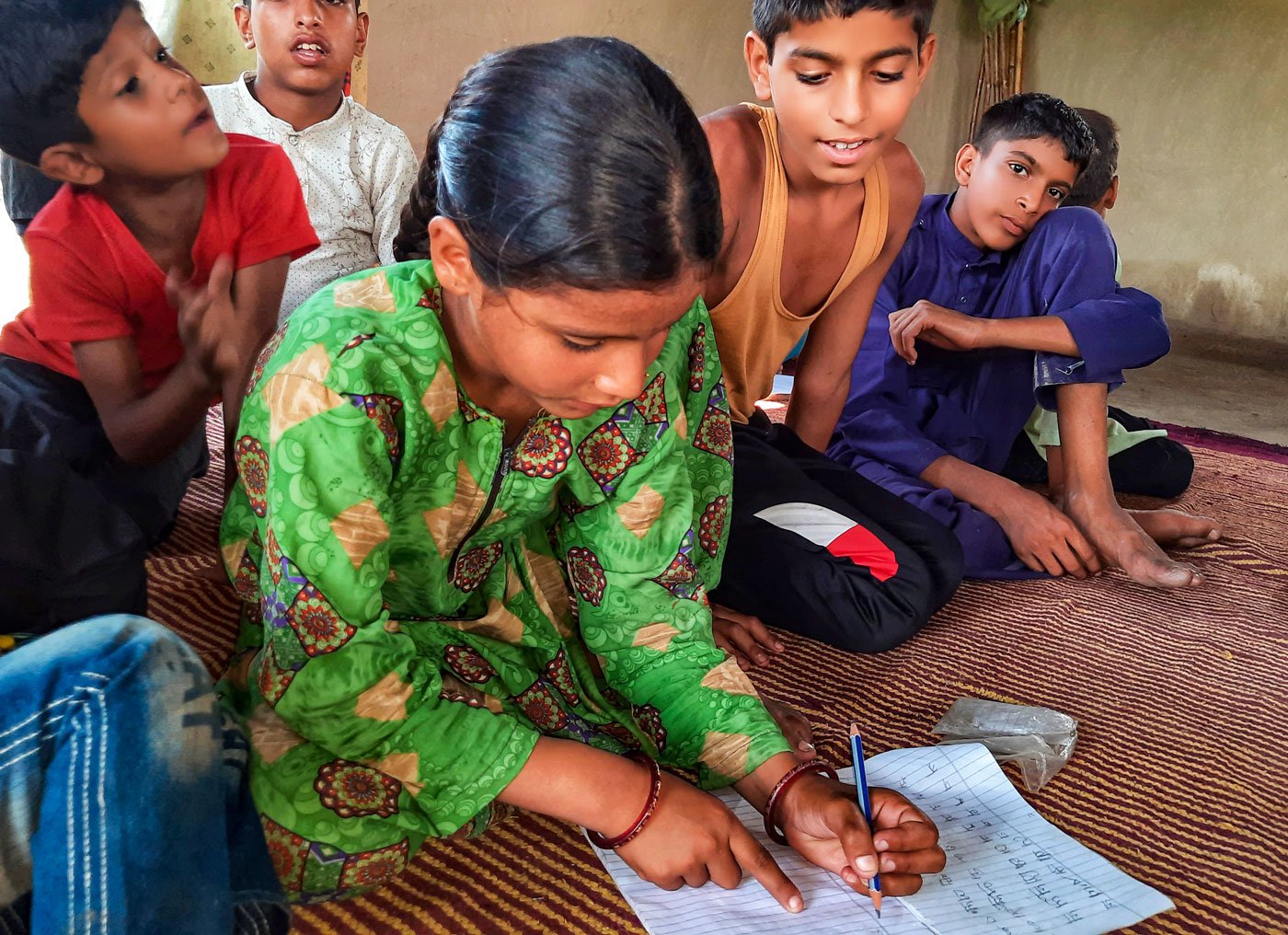
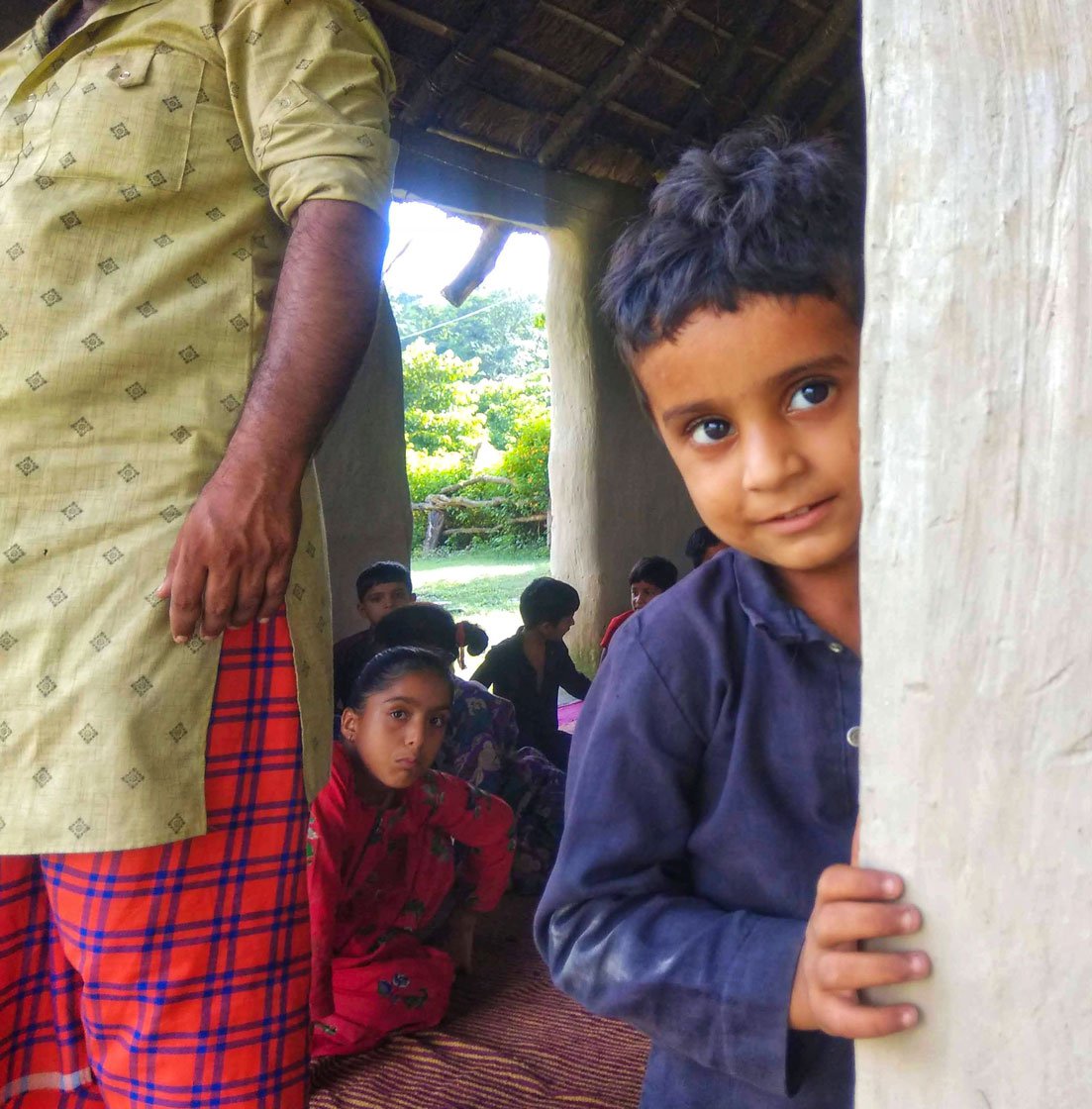
Initially, few girls would turn up for the basti classes, but the situation is changing, with Ramzano (left) and Nafeesa Bano (centre) among those who now attaned. Right: Rafeeq, a Van Gujjar child, at the learning centre
Sharafat Ali’s two children, seven-year-old son Naushad and five-year-old daughter Asha, also study in the basti school. “For the last five years, I have stopped going [to the high mountains] with our animals in the summer,” he says. “We now live in the same place so that our children can also read and write. We want them to get a good education. They should also live like others in the society. They should also get jobs.”
The hard work is showing other results too across various Van Gujjar settlements, Shamshad says. “In 2019, around 40 children from five Van Gajjar bastis got admitted to Class 6 six through our sangathan . Some boys and even a few girls (though none so far from Kunau Chaud) have begun reaching Class 10, a few have gone up to Class 12.”
Initially, he adds, few girls would turn up for the
basti
classes. “We had to speak to the parents. The situation has changed in the last 3-4 years.” Ramzano, around 12 years old, is among those students from Kunau Chaud who has got admission to Class 6 this academic year. She will be the first girl from her family to attend formal school, and tells me she wants to pass Class 10.
And among them, perhaps in some time, will be nine-year-old Fatima Bano, who was reciting that poem. She too might eventually undertake her community’s uncertain journey to a government school.
